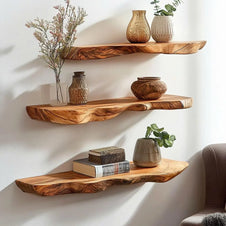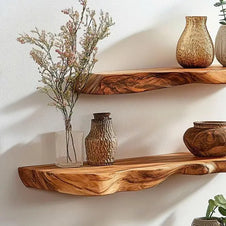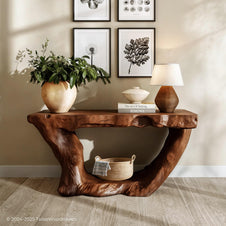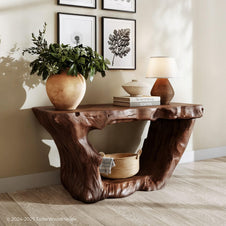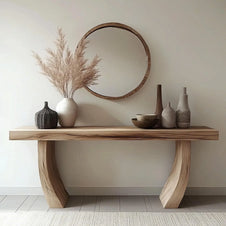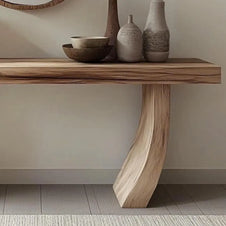Shelves are more than storage—they’re storytelling platforms. Whether it’s your child’s first drawing, your favorite ceramic mug, or a treasured book collection, every item deserves a shelf that honors it. But what is the best wood to make shelves out of when beauty, strength, and sustainability all matter?
Why the Type of Wood Matters in Shelving
Choosing what is the best wood to make shelves out of isn’t simply about what looks good—though appearance is certainly a part of it. Different woods vary in:

Think of your shelf not just as a flat surface, but as a foundation. A good shelf holds weight with grace and ages beautifully over time.
1. Solid Oak – The Time-Tested Classic
Oak is often the first answer when someone asks, what is the best wood to make shelves out of—and for good reason. It’s incredibly strong, available in both red and white varieties, and it takes stain beautifully.
Pros:
-
Extremely durable and long-lasting
-
Distinct, attractive grain pattern
-
Excellent load-bearing capability
Cons:

Oak is perfect for heavy-duty shelves—think wall-to-wall bookshelves, kitchen wall storage, or rustic mantels in farmhouse interiors.
2. Walnut – Rich Beauty with Depth
Walnut is a darker hardwood known for its elegance. If you’re creating floating shelves to display curated art or ceramics, walnut adds warmth and luxury.
Pros:
-
Deep, chocolate-brown tone
-
Smooth texture, great for modern and vintage styles
-
Stable and strong under pressure
Cons:
When clients ask what is the best wood to make shelves out of for high-end interiors, walnut is a top pick for its graceful aging and rich color profile.
3. Maple – Light, Clean, and Adaptable
Maple is a hardwood, but it has a smooth, light tone that works well in Scandinavian, minimalist, or contemporary homes.
Pros:
Cons:
Maple is an ideal option when you want something versatile. It lets your décor shine while offering a subtle frame beneath it.
4. Cherry – Elegant Aging Over Time
Cherrywood starts out pinkish-brown and deepens into a rich reddish hue as it ages—a process many of our clients find captivating.
Pros:
Cons:

We often recommend cherry when a client wants their shelves to evolve in appearance alongside their life.
5. Pine – The Budget-Friendly Beauty
If you’re asking what is the best wood to make shelves out of and working with a limited budget, pine is worth your consideration.
Pros:
-
Lightweight and easy to work with
-
Takes paint and stain well
-
Affordable and widely available
Cons:
We use sustainably sourced pine when creating wall-mounted shelves for seasonal décor or lighter loads. It offers great value without sacrificing charm.
6. Cedar – Naturally Resistant and Aromatic
Cedar may surprise you on this list, but for closet shelving, entryways, or outdoor-friendly furniture, its natural resistance to insects and moisture is a huge plus.
Pros:
Cons:

If you're deciding what is the best wood to make shelves out of for storage in damp environments, cedar is a reliable companion.
7. Mahogany – Old-World Luxury
This tropical hardwood is celebrated for its reddish tone and classic look. For a traditional library, formal living room, or elegant office, mahogany is unmatched.
Pros:
-
Beautiful reddish-brown color
-
High density and durability
-
Great for carved or detailed shelf edges
Cons:
We always emphasize responsible sourcing when working with tropical hardwoods like mahogany. When used thoughtfully, it creates heirloom pieces that last generations.
8. Reclaimed or Live Edge Wood – For Natural Character
Sometimes, the question isn’t just what is the best wood to make shelves out of, but what story do you want your shelves to tell? Reclaimed wood and live edge slabs offer unmatched personality.
Pros:
-
Sustainable, eco-conscious option
-
Full of unique character and imperfections
-
Great for custom, artisan shelving
Cons:
-
Requires careful preparation and sealing
-
May have old nails, cracks, or irregular shapes
At Tailor Wood Haven, our tree-shaped and live-edge shelves often use reclaimed walnut, oak, or pine, giving each piece a second life—and a story worth sharing.
Which Wood Fits Your Space and Style?
To help you choose what is the best wood to make shelves out of for your home, here’s a quick comparison table:
|
Wood Type
|
Strength
|
Appearance
|
Best For
|
|
Oak
|
Very strong
|
Bold grain
|
Bookshelves, kitchens
|
|
Walnut
|
Strong
|
Dark & smooth
|
Floating shelves, luxury
|
|
Maple
|
Very strong
|
Light & clean
|
Minimalist homes
|
|
Cherry
|
Moderate
|
Reddens with age
|
Heirloom-style décor
|
|
Pine
|
Moderate
|
Soft, light
|
Budget projects, painted finishes
|
|
Cedar
|
Light
|
Aromatic, rustic
|
Closets, entryways
|
|
Mahogany
|
Strong
|
Deep red
|
Traditional interiors
|
|
Reclaimed/Live Edge
|
Varies
|
Unique & natural
|
Custom or statement shelving
|
Customizing Shelves for Lasting Beauty
Once you know what is the best wood to make shelves out of, the next step is customization—something we specialize in at Tailor Wood Haven.
We consider:
-
Weight load requirements: Books need dense hardwoods; light décor may do well on pine.
-
Color preferences: Do you want to stain, paint, or leave natural?
-
Mounting method: Wall-mounted? Floating? Built into cabinetry?
-
Environmental factors: Humidity, sun exposure, and temperature shifts can affect longevity.
When we design shelves, we’re not just building furniture—we’re building harmony between wood, space, and life.
Sustainability Matters
In today's world, asking what is the best wood to make shelves out of should also include asking how sustainable is this choice?
At Tailor Wood Haven:
-
We source from local, responsibly managed forests
-
We prioritize reclaimed and FSC-certified lumber
-
We craft with care to minimize waste and maximize life span
A beautiful shelf shouldn’t come at the expense of a beautiful forest.
Caring for Your Wooden Shelves Over Time
Choosing what is the best wood to make shelves out of is only the beginning of your shelf’s journey. To ensure it lasts for decades—and perhaps even longer—proper care is essential.
Here are a few care tips our artisans swear by:
-
Avoid excessive moisture: Even durable hardwoods can warp or stain if placed near consistent dampness. Use coasters under potted plants or beverages.
-
Dust regularly with a soft cloth: This helps prevent buildup that dulls the finish. Avoid harsh chemical sprays—opt for natural wood-safe polish instead.
-
Protect from direct sunlight: Woods like cherry or walnut can deepen or shift in tone when exposed to strong UV light. Consider UV-protective finishes or repositioning your shelf away from south-facing windows.
-
Inspect brackets and hardware seasonally: Especially for floating or wall-mounted designs, temperature and humidity changes can affect wall fasteners. A quick check helps keep everything secure.
When properly maintained, shelves crafted from the right wood can become legacy pieces, passed from one generation to the next.
Final Thoughts: What Is the Best Wood to Make Shelves Out Of?
At the heart of every home is a surface where meaningful things are placed. When someone asks us what is the best wood to make shelves out of, our answer is never one-size-fits-all. It depends on your needs, your taste, your space, and your values.
Whether you’re drawn to the timeless strength of oak, the subtle elegance of maple, or the earthy soul of reclaimed wood, the right shelf starts with the right wood—and the right hands to craft it.
If you're ready to bring handcrafted beauty into your space, let us help you create shelves that feel as personal as the memories they hold.

